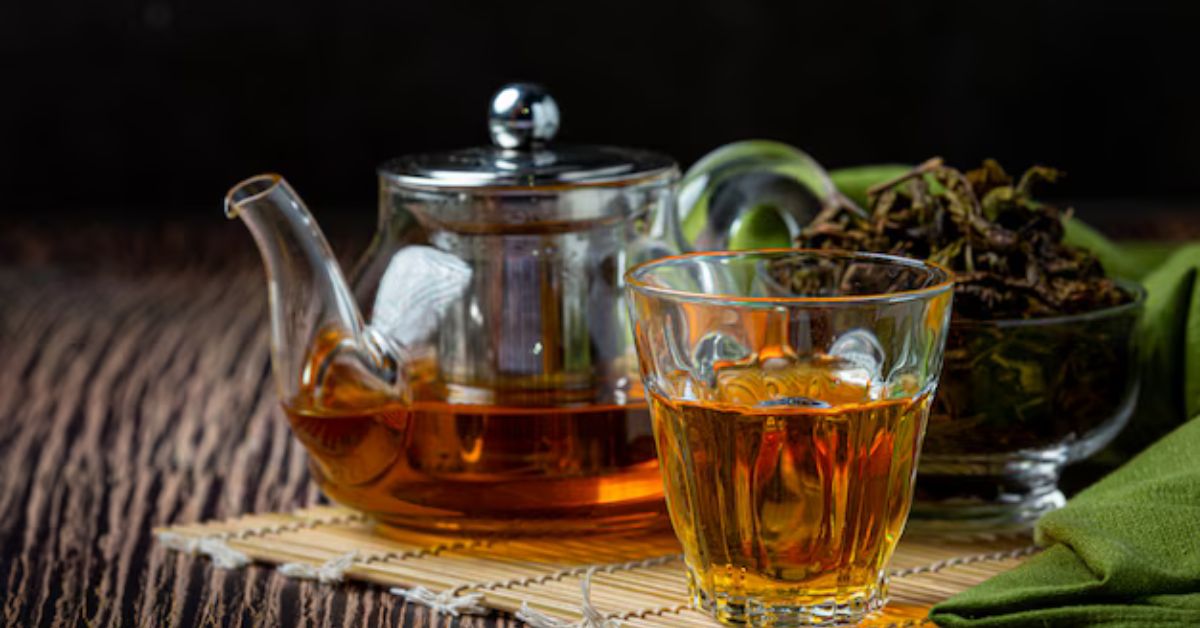Green tea, one of the most ancient and widely consumed beverages globally, holds a special place in Taiwanese culture. While Taiwan is known primarily for its oolong teas, green tea also plays a significant role in its tea culture. In Taiwan, green tea is often referred to as “lǜ chá” (綠茶), a term that directly translates to “green tea.” Although the term itself might seem simple, the variety and richness of green tea in Taiwan offer a deep dive into the island’s tea culture, its history, and its production methods.
This article explores the unique characteristics of Taiwanese green tea, its cultural importance, and the traditional and modern ways it is enjoyed across the island.
The Origins of Green Tea in Taiwan
Taiwan’s tea culture dates back to the 17th century, with its early development influenced by mainland China, particularly the Fujian province. Early settlers from Fujian brought with them tea plants and the knowledge of tea processing, leading to the island’s gradual rise as a global producer of fine teas. While Taiwan is best known for oolong and black teas, green tea production has also had its share of attention.
Green tea in Taiwan, production was initially influenced by Chinese traditions, but over time, Taiwanese tea producers have developed unique methods and varieties that reflect the island’s distinct climate and terroir. Although green tea occupies a smaller share of Taiwan’s tea market compared to oolong, its production has a long history, especially in areas like Sanxia and Pinglin, where the right climatic conditions allow for high-quality tea.
The Characteristics of Taiwanese Green Tea
Taiwanese green tea is renowned for its fresh, vegetal taste, vibrant green color, and delicate aroma. It is processed using minimal oxidation, which preserves the natural flavors and nutrients of the tea leaves. This makes Taiwanese green tea lighter in flavor compared to oolong or black tea, with a cleaner, crisper taste that has hints of sweetness and grassy notes.
- Cultivation and Harvesting: Green tea in Taiwan is usually harvested during the spring, when the tea plants produce the most tender and flavorful leaves. The leaves are carefully picked by hand to ensure that only the finest shoots are used for production. Taiwan’s mountainous terrain and subtropical climate provide ideal conditions for cultivating tea, resulting in green teas that are rich in antioxidants and possess a high-quality flavor profile.
- Processing: Unlike oolong or black tea, green tea is not allowed to oxidize during the production process. Once the tea leaves are harvested, they are quickly steamed or pan-fired to stop the oxidation process. This step helps preserve the tea’s green color and fresh flavor. After steaming or pan-firing, the leaves are carefully rolled and dried. The result is a delicate tea that retains the natural characteristics of the tea plant.
- Flavor Profile: Taiwanese green tea offers a delicate and refreshing flavor. The tea’s taste varies depending on the region and specific cultivar used, but typically, it carries notes of fresh grass, sweet vegetables, and sometimes floral hints. The tea has a smooth texture and a subtle lingering sweetness, making it a popular choice for those who prefer lighter teas.
Popular Varieties of Taiwanese Green Tea
Though Taiwan is more famous for its oolong teas, several green tea varieties are grown and enjoyed across the island. These varieties offer a unique taste of Taiwan’s green tea tradition, showcasing the island’s diverse climate and tea-making expertise.
- Sanxia Bi Luo Chun (三峽碧螺春): One of Taiwan’s most famous green teas, Bi Luo Chun from Sanxia is a tightly rolled tea with a bright green color and strong floral aroma. The tea is delicate and light, with a sweet aftertaste. Sanxia is a region known for producing high-quality green tea, and Bi Luo Chun is especially prized for its fresh and vibrant flavor.
- Longjing Tea (龍井茶): Also known as Dragon Well tea, Longjing is a famous variety originating from mainland China but is also grown in Taiwan. Taiwanese Longjing tea has a fresh, nutty flavor and smooth texture. It is characterized by its flat, jade-colored leaves, which are hand-pressed during the drying process.
- Mao Feng (毛峰): Mao Feng green tea is known for its twisted leaf shape and fresh, grassy taste. This variety is less well-known outside Taiwan but is enjoyed locally for its clean, crisp flavor and soothing aroma. It is often drunk in the morning or early afternoon for a refreshing pick-me-up.
- Jade Green Tea (玉綠茶): Jade Green Tea is another popular variety produced in Taiwan. It gets its name from the vibrant green color of its leaves and liquor. The tea has a smooth, slightly sweet flavor with mild vegetal notes, making it an excellent choice for both casual drinkers and tea connoisseurs.
The Cultural Significance of Green Tea in Taiwan
Green tea is more than just a beverage in Taiwan; it is a significant part of social and cultural practices. Though Taiwan’s tea culture is most closely associated with oolong tea, green tea plays an essential role in the everyday lives of many Taiwanese people.
- Tea Ceremonies and Traditions: Tea is an integral part of many Taiwanese traditions and rituals, including tea ceremonies. While oolong tea often takes center stage in formal tea ceremonies, green tea is also used in more casual settings. Drinking tea is seen as a way to relax, connect with nature, and foster relationships. For many Taiwanese people, sharing a cup of green tea is a way to build community and enjoy a moment of calm in their busy lives.
- Health Benefits: Like other green teas, Taiwanese green tea is celebrated for its health benefits. Green tea is rich in antioxidants, particularly catechins, which are known for their potential to improve heart health, boost metabolism, and reduce inflammation. Many Taiwanese people drink green tea for these health benefits, making it a staple in both traditional diets and modern wellness routines.
- Everyday Enjoyment: In Taiwan, green tea is enjoyed in various forms, ranging from simple brewed tea leaves to bottled green tea found in convenience stores. Cold or hot, green tea is a common refreshment, especially during the warmer months. It is also used as a base for bubble tea, a globally popular Taiwanese beverage that incorporates tea, milk, and tapioca pearls.
The Global Influence of Taiwanese Green Tea
Taiwanese green tea has gained popularity beyond the island’s shores, contributing to the global appreciation of high-quality green teas. Taiwan’s reputation for producing fine teas, including its unique green tea varieties, has attracted attention from tea lovers and connoisseurs worldwide.
- Export Market: Although Taiwan’s green tea production is not as large as its oolong tea production, it has found a growing market abroad. Countries like Japan, the United States, and parts of Europe have seen an increase in the import of Taiwanese green teas, as consumers look for high-quality alternatives to mainstream varieties.
- Influence on Tea Culture: Taiwan’s unique approach to tea cultivation and production has influenced tea culture globally. The island’s emphasis on handpicked, carefully processed tea leaves and its dedication to preserving traditional methods have set a high standard for green tea production worldwide. Taiwan’s green tea varieties, particularly Bi Luo Chun and Jade Green Tea, are increasingly featured in specialty tea shops and high-end tea ceremonies.
The Future of Taiwanese Green Tea
As the global demand for high-quality tea continues to grow, Taiwanese green tea has the potential to play a more significant role in the market. Efforts to preserve traditional tea-making techniques while also innovating new methods of cultivation and production are helping Taiwan’s green tea gain international recognition.
- Sustainability Efforts: Taiwan’s tea industry is increasingly focused on sustainability, with many tea farmers adopting organic farming practices to protect the environment and produce cleaner, more natural teas. This trend is particularly important for green tea, as it is consumed in its purest form with minimal processing.
- Innovation in Tea Production: Taiwanese tea producers continue to innovate in both the cultivation and processing of green tea. From experimenting with new cultivars to refining traditional techniques, these efforts are ensuring that Taiwanese green tea remains a unique and cherished part of the global tea culture.
Conclusion
Green tea, known as lǜ chá in Taiwan, holds a vital place in the island’s rich tea culture. While oolong may be the most famous tea produced in Taiwan, green tea boasts its own distinct flavors, traditions, and varieties. From the celebrated Sanxia Bi Luo Chun to the globally recognized Longjing, Taiwanese green tea offers a diverse range of tastes and experiences.
With its deep-rooted cultural significance, health benefits, and expanding global presence, Taiwanese green tea continues to be a staple in both local and international tea communities. As Taiwan continues to innovate and uphold its commitment to quality tea production, green tea is set to remain an essential and celebrated part of the island’s tea legacy for generations to come.









